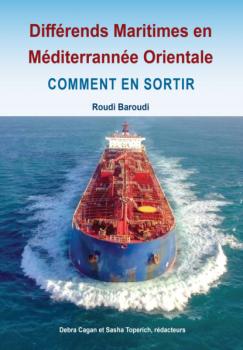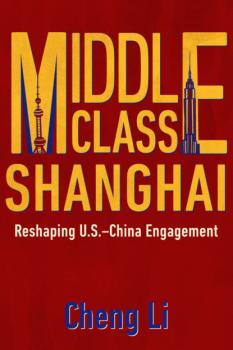ТОП просматриваемых книг сайта:
ЛИТМИР - LITMIR.BIZ - Электронная библиотека
Скачивание или чтение онлайн электронных книг.Аннотация
Tokyo Junkie is a memoir that plays out over the dramatic 60-year growth of the megacity Tokyo, once a dark, fetid backwater and now the most populous, sophisticated, and safe urban capital in the world. Follow author Robert Whiting ( The Chrysanthemum and the Bat , You Gotta Have Wa , Tokyo Underworld ) as he watches Tokyo transform during the 1964 Olympics, rubs shoulders with the Yakuza and comes face to face with the city’s dark underbelly, interviews Japan’s baseball elite after publishing his first best-selling book on the subject, and learns how politics and sports collide to produce a cultural landscape unlike any other, even as a new Olympics is postponed and the COVID virus ravages the nation. A colorful social history of what Anthony Bourdain dubbed, “the greatest city in the world,” Tokyo Junkie is a revealing account by an accomplished journalist who witnessed it all firsthand and, in the process, had his own dramatic personal transformation.
Аннотация
Ein literarischer Krimi-Leckerbissen. Wahrsagerin Blanche will reich werden – sehr reich. Noch haust sie im Kölner Severinsviertel, wo die Häuser bröckeln. Bald wird sie sich jedoch ein exklusiveres Domizil gönnen, denn sie treibt ihr Spiel mit der ebenso naiven wie wohlhabenden Sybille. Aber die Geister der Vergangenheit hetzen sie Tag und Nacht. Als das Stadtarchiv einstürzt, wendet sich das Blatt. Ob zum Guten oder Schlechten, weiß nur Cleo, die mysteriöse Katze. Aber wer fragt eine Katze? Ulrike Blatter, geboren im Mai. Wann sonst? In Köln. Wo sonst? Danach viel herumgekommen. Als Ärztin in der Rechtsmedizin sammelte sie Themen für ihre Krimis, in der Sozialpsychiatrie lernte sie Menschen mit originellen Biographien nicht nur kennen, sondern auch lieben. Heute lebt sie im südbadischen Exil, wo sie ihre große Liebe fand. Es zieht sie aber immer wieder zurück ins Rheinland. Da geht es ihr nicht anders als Blanche, der Protagonistin dieses Romans. Mehr Informationen unter: www.ulrike-blatter.de oder auf facebook.
Аннотация
Nach der Entbindung beginnt vor allem für die Frau ein völlig neuer Lebensabschnitt. Das erleichterte «Endlich da!» weicht nicht selten einem «Das habe ich mir ganz anders vorgestellt!» Da ist der Wunsch, alles im Sinne des Kindes richtig zu machen, doch gleichzeitig fordern die eigenen Bedürfnisse ihr Recht. Frauke Schwaiblmair zeigt, wie natürlich solche elterlichen Unsicherheiten sind, und stärkt gleichzeitig das Vertrauen in die eigenen Erziehungsfähigkeiten.
Аннотация
Erholung finden, einmal offline sein und zur Ruhe kommen ? viele Erwachsene tun sich schwer, mit der Betriebsamkeit und den vielfältigen und immer dringlichen Anforderungen unserer Zeit umzugehen. Kindern geht es da nicht anders, denn sie leben nicht in einem Schonraum. Umso wichtiger ist es, Kindern von klein auf, Möglichkeiten auf den Weg zu geben, zur Ruhe zu kommen, ganz bei sich zu sein und bewusst die Hektik vor der Tür zu lassen. Der ?Don Bosco Spieleschatz? bietet auf 112 Seiten alle grundlegenden Spiele und Übungen zur ?Entspannung? und dazu das Grundlagenwissen kurz notiert. Pädagogische Grundlagen und mehr als 80 Spiele zu den Themen: – Ausgewogene An- und Entspannung – Spiele für alle Sinne – Lockere Muskulatur – Gesunde Atmung – Entspannende innere Bilder
Information zur Reihe: Im Spiel probieren sich Kinder mit ihren Kompetenzen und Fähigkeiten aus und erweitern diese sukzessive. Das eigentliche Lernen geschieht dabei unsichtbar. Viele Erwachsene können daher den Wert des Spiels nicht (an-)erkennen. Pädagogen dagegen wissen um den Schatz, der im kindlichen Spielen verborgen liegt und nutzen diesen Schatz gezielt zur Entwicklungsförderung. Der ?Don Bosco Spieleschatz? beinhaltet das Beste, was die Spielpädagogik zu bieten hat, und das in einer hochwertigen Ausstattung, feinen Gestaltung und praktischen Aufmachung. Deshalb nehmen ErzieherInnen und GrundschullehrerInnen diese Reihe gerne in die Hand. Zu jedem Förderthema finden sich auf 112 Seiten alle grundlegenden Spiele und Übungen und dazu das Grundlagenwissen kurz notiert.
Information zur Reihe: Im Spiel probieren sich Kinder mit ihren Kompetenzen und Fähigkeiten aus und erweitern diese sukzessive. Das eigentliche Lernen geschieht dabei unsichtbar. Viele Erwachsene können daher den Wert des Spiels nicht (an-)erkennen. Pädagogen dagegen wissen um den Schatz, der im kindlichen Spielen verborgen liegt und nutzen diesen Schatz gezielt zur Entwicklungsförderung. Der ?Don Bosco Spieleschatz? beinhaltet das Beste, was die Spielpädagogik zu bieten hat, und das in einer hochwertigen Ausstattung, feinen Gestaltung und praktischen Aufmachung. Deshalb nehmen ErzieherInnen und GrundschullehrerInnen diese Reihe gerne in die Hand. Zu jedem Förderthema finden sich auf 112 Seiten alle grundlegenden Spiele und Übungen und dazu das Grundlagenwissen kurz notiert.
Информация о книге
Автор произведения Jutta Bläsius
Жанр Учебная литература
Серия Don Bosco Spieleschatz
Аннотация
The ways and means described in this book constitute a road map for responsible members of the international community to work together, reduce tensions, resolve differences over maritime boundaries peacefully, and reap the rewards of a safer, stabler, and more prosperous world. This volume shows that the UN and its associated treaties, courts, and other institutions have developed a body of laws, rules, and procedures guiding the way to negotiated, peaceful outcomes. Mr. Baroudi’s book also points to rapid advances of science and technology that take much of the guesswork out of boundary delineation, making this route more reliable and user-friendly than ever before. The successful use of these mechanisms would set a useful example for the resolution of boundary disputes in other regions of the world. That, in turn would restore confidence in the international rules-based system and could pave the way for the settling of some of the world’s most troubling and dangerous disputes.
Аннотация
The Arctic, long described as the world’s last frontier, is quickly becoming our first frontier—the front line in a world of more diffuse power, sharper geopolitical competition, and deepening interdependencies between people and nature. A space of often-bitter cold, the Arctic is the fastest-warming place on earth. It is humanity’s canary in the coal mine—an early warning sign of the world’s climate crisis. The Arctic “regime” has pioneered many innovative means of governance among often-contentious state and non-state actors. Instead of being the “last white dot on the map,” the Arctic is where the contours of our rapidly evolving world may first be glimpsed. In this book, scholars and practitioners—from Anchorage to Moscow, from Nuuk to Hong Kong—explore the huge political, legal, social, economic, geostrategic and environmental challenges confronting the Arctic regime, and what this means for the future of world order.
Аннотация
Southeast Asia has become a hotbed of strategic rivalry between China and the United States. China is asserting its influence in the region through economic statecraft and far-reaching efforts to secure its sovereignty claims in the South China Sea, while the United States has promoted a Free and Open Indo-Pacific strategy that explicitly challenges China’s expanding influence—warning other countries that Beijing is practicing predatory economics and advancing governance concepts associated with rising authoritarianism in the region. In this timely volume, leading experts from Southeast Asia, Australia, and the United States assess these great power dynamics by examining the strategic landscape, domestic governance trends, and economic challenges in Southeast Asia, with the latter focusing especially on infrastructure. Among other findings, the authors express concern that U.S. policy has become too concentrated on defense and security, to the detriment of diplomacy and development, allowing China to fill the soft power vacuum and capture the narrative through its signature Belt and Road Initiative. The COVID-19 pandemic has only increased the policy challenges for Washington as China recovers faster from the outbreak, reinforcing its already advantaged economic position and advancing its strategic goals as a result. As the Biden administration begins to formulate its strategy for the region, it would do well to consider these findings and the related policy recommendations that appear in this volume. Much is at stake for U.S. foreign policy and American interests. Southeast Asia includes two U.S. allies—Thailand and the Philippines—important security partners like Singapore, and key emerging partners such as Vietnam and Indonesia. Almost 42,000 U.S. companies export to the 10 countries that comprise the Association of Southeast Asian Nations (ASEAN), supporting about 600,000 jobs in the United States, but America’s economic standing is increasingly at risk.
Аннотация
The ways and means described in this book constitute a road map for responsible members of the international community to work together, reduce tensions, resolve differences over maritime boundaries peacefully, and reap the rewards of a safer, stabler, and more prosperous world. This volume shows that the UN and its associated treaties, courts, and other institutions have developed a body of laws, rules, and procedures guiding the way to negotiated, peaceful outcomes. Mr. Baroudi’s book also points to rapid advances of science and technology that take much of the guesswork out of boundary delineation, making this route more reliable and user-friendly than ever before. The successful use of these mechanisms would set a useful example for the resolution of boundary disputes in other regions of the world. That, in turn would restore confidence in the international rules-based system and could pave the way for the settling of some of the world’s most troubling and dangerous disputes.
Аннотация
Οι μέθοδοι που περιγράφονται στο βιβλίο αυτό καθιστούν έναν οδικό χάρτη, ώστε τα υπεύθυνα μέλη της διεθνούς κοινότητας να συνεργαστούν και να λύσουν τις διαφορές τους ειρηνικά, και να καρπωθούν τα οφέλη ενός πιο σταθερού και ευήμερου κόσμου. Το βιβλίο αυτό, επίσης, δείχνει ότι τα Ηνωμένα Εθνη και οι διεθνείς συμβάσεις τους, καθώς και τα δικαστήρια και οι θεσμοί που επιβάλλουν αυτές τις συμβάσεις, έχουν εξελίξει ένα σώμα νόμων, κανόνων και διαδικασιών που δείχνουν τον δρόμο προς τις διαπραγματεύσεις και τις ειρηνικές λύσεις. Το βιβλίο του Dr. Baroudi επίσης δείχνει πόσο έχει προχωρήσει η τεχνολογία η οποία αφαιρεί τις όποιες ασάφειες στην χάραξη των συνόρων, καθιστώντας τον μηχανισμό του διεθνούς δικαίου περισσότερο ελκυστικό από ποτέ. Η πετυχημένη χρήση αυτού του μηχανισμού θα λειτουργούσε ως χρήσιμο παράδειγμα αποφυγής εντάσεων, και θα ενδυνάμωνε το διεθνές σύστημα κανόνων συμπεριφοράς, βοηθώντας στην επίλυση μερικών από τις πιο δύσκολες και επικίνδυνες διαμάχες του κόσμου.
Аннотация
The United States may be headed toward a disastrous conflict with China unless Washington updates its understanding of contemporary Chinese society After four decades of engagement, the United States and China now appear to be locked on a collision course that has already fomented a trade war, seems likely to produce a new cold war, and could even result in dangerous military conflict. The current deterioration of the bilateral relationship is the culmination of years of disputes, disillusionment, disappointment, and distrust between the two countries. Washington has legitimate concerns about Beijing’s excessive domestic political control and aggressive foreign policy stances, just as Chinese leaders believe the United States still has futile designs on blocking their country’s inevitable rise to great-power status. Cheng Li’s Middle Class Shanghai argues that American policymakers must not lose sight of the expansive dynamism and diversity in present-day China. The caricature of the PRC as a monolithic Communist apparatus set on exporting its ideology and development model is simplistic and misguided. Drawing on empirical research in the realms of higher education, avant-garde art, architecture, and law, this unique study highlights the strong, constructive impact of bilateral exchanges. Combining eclectic human stories with striking new data analysis, this book addresses the possibility that the development of China’s class structure and cosmopolitan culture—exemplified and led by Shanghai—could provide a force for reshaping U.S.-China engagement. Both countries should build upon the deep cultural and educational exchanges that have bound them together for decades. The author concludes that U.S. policymakers should neither underestimate the role and strength of the Chinese middle class, nor ostracize or alienate this force with policies that push it toward jingoistic nationalism to the detriment of both countries and the global community. With its unique focus, this book will enlighten policymakers, scholars, business leaders, and anyone interested in China and its increasingly fraught relations with the United States.










